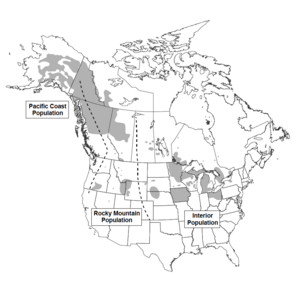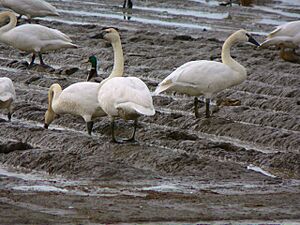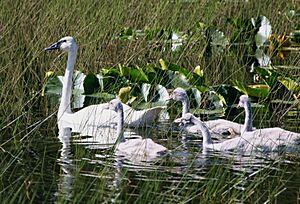Trumpeter swan facts for kids
Quick facts for kids Trumpeter swan |
|
|---|---|
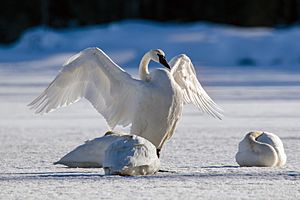 |
|
| Conservation status | |
| Scientific classification | |
| Genus: |
Cygnus
|
| Species: |
buccinator
|
The trumpeter swan (Cygnus buccinator) is the largest type of swan in the world. These amazing birds live in North America. They are known for their loud, trumpet-like calls.
Contents
About the Trumpeter Swan
Trumpeter swans are truly impressive birds. They are the heaviest flying birds in North America. These swans can grow very large. They are a beautiful sight to see in the wild.
What They Look Like
Trumpeter swans are mostly white. They have a long, graceful neck. Their bill is completely black. This black bill helps tell them apart from other swans, like the Mute swan, which has an orange bill with a black knob. Their legs and feet are also black.
These swans are very big. They can be up to 6 feet (1.8 meters) long. Their wingspan can reach over 10 feet (3 meters)! Adult males are usually larger than females.
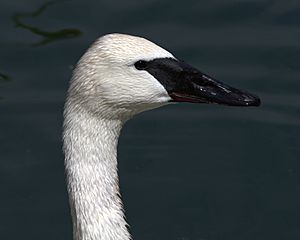
Where They Live
Trumpeter swans live across North America. They are found in parts of Alaska, Canada, and the United States. They prefer areas with shallow water. This includes large wetlands, marshes, and lakes.
During the summer, they live in northern areas. In winter, many swans fly south. They go to places where the water does not freeze. This helps them find food.
What They Eat
Trumpeter swans are herbivores. This means they eat plants. They mostly eat plants that grow in the water. They use their long necks to reach plants on the bottom.
Their diet includes stems, leaves, and roots of water plants. Sometimes, they also eat seeds and grains. In winter, they might feed in farm fields. They look for leftover crops there.
Life Cycle
Trumpeter swans form strong pair bonds. They often mate for life. They build large nests near water. Nests are made from plant material.
The female swan lays about 4 to 6 eggs. Both parents help incubate the eggs. The eggs hatch after about a month. Baby swans are called cygnets. They are covered in soft gray down.
Cygnet grow quickly. They learn to fly when they are about 3 to 4 months old. Young swans stay with their parents for their first year. They learn important survival skills.
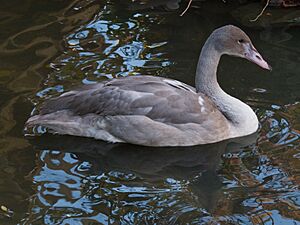
Conservation
For a long time, trumpeter swans were hunted. Their numbers became very low. People worried they might disappear forever.
Thanks to conservation efforts, their numbers are now growing. They are listed as "Least Concern" by the IUCN. This means they are not currently in danger. Protecting their habitats is still very important.
Images for kids
-
Plate 406 of the Birds of America by John James Audubon, depicting the trumpeter swan
-
Three flying in Missouri
-
Mated pair on a lake, Kenai National Wildlife Refuge, Alaska
See also
 In Spanish: Cisne trompetero para niños
In Spanish: Cisne trompetero para niños



